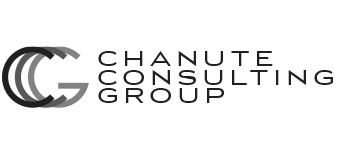How to foster #Innovation in supporting functions – Who is the Customer?
On the Sustainable Innovation Forum, a question was posted regarding innovation in supporting functions that are mostly doing routine or repeatable work. It was questioned whether an innovation culture could (or should) be created in these parts of a company.
The answer is absolutely yes, but with a caveat. The innovation needs to be focused in the right direction or the results will not be good.
There are usually functions within a company that play more of a supporting role vs. other functions that are primary revenue generators and differentiators vs. the external competition. Sometimes this includes HR, Finance, or IT; although there are certainly many businesses where one or more of those functions is a primary revenue generator or external differentiator. The goal of a supporting function is to operate efficiently to support the rest of the business. Innovation is still relevant in these areas, but the energy must be focused on ideas that provide better support to the internal customers.
I’ll use an admittedly rather silly analogy of an on-site company-run employee cafeteria. The cafeteria exists so that employees can eat on-site quickly and cost-effectively. It is a support function and if it can figure out how to be more cost-effective or faster in serving employees, then those are great areas for focusing innovation.
However, if the on-site cafeteria decides that it wants to innovate to boost the cafeteria’s internal revenue metrics by promoting a new schedule that invents new mealtimes and encourages employees to take meal breaks at 10AM, 12PM, and 2PM, that might make the cafeteria’s revenue increase substantially, but it would be detrimental to the productivity of the primary functions that keep the whole business profitable.
An innovative mindset is always a good thing, but it needs to happen in the context of doing things that benefit the customer. The customer for a support function is one or more of the revenue generating functions in a company. The innovation in a support function has to occur in the context of making life easier or more efficient for the primary revenue-generating functions. Alternatively, it can be useful to innovate in reducing the expense structure of a support function, but there is a significant potential pitfall here that I’ll get back to in a moment.
I find that innovation sometimes goes haywire when a support function starts innovating but forgets that their customer is the rest of the company. Then you run the risk of getting lots of cool-sounding, cutting edge ideas that make the local metrics for the support function look really good, but the result for their internal customers is change and turmoil just for the sake of change.
We frequently see support functions implementing new innovative processes that make life easier for the support function, but that transfer work onto the employees in other functions who are supposed to be serving the company’s external customers. This is the pitfall many companies fall into when their support functions innovate on cost effectiveness. There are many ways for a supporting function to come up with innovative ways to reduce their own internal expense metrics, but unfortunately frequently this happens in ways that add hidden costs elsewhere.
If the revenue-generating employees in your business suddenly have to spend half their time doing work that used to be done by a supporting function, the support function may have great results on their internal expense metrics, but the overall corporate results will suffer. Be careful when innovating on cost effectiveness in supporting functions. If all of the costs (direct and hidden) aren’t captured in the analysis, the overall results may be detrimental.
Any function can and should focus on innovation, but it needs to be beneficial to the customer of that function (internal or external) or the effort will be misguided. In the end, innovation in a support function is no different than innovation for a revenue-generating function. You must focus the energies of the innovation on what is meaningful and beneficial to your customer. This means knowing your customer (internal or external) and their needs.
